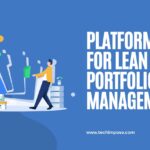Ransomware is a cybercriminal attack that locks and encrypts your data or devices, threatening to delete it forever if you don’t pay. This is why it’s critical to have a strong, comprehensive security strategy in place.
Attackers monetize access to compromised networks by exfiltrating data and extorting double ransom payments. Public institutions and hospitals — with troves of sensitive information that can be sold — are favorites among attackers.
Understand the Threat
Ransomware infects systems and prevents or severely restricts access to devices or networks until a payment is made. Cybercriminals use different methods to achieve this goal, including encrypting data, deleting data, and even disrupting access through DDoS attacks and locking of systems. A successful attack can cause significant damage to the reputation of an organization and its customers, as well as impact business processes.
It can also lead to substantial financial and legal liabilities, such as needing to pay a ransom or losing cyber insurance. Organizations must have continuous data backups and an understanding of ransomware’s impact on their operations to combat these threats. Organizations must also be able to identify infected systems, disconnect them from networks and lock shared drives so the malware cannot encrypt more data.
The malware encrypts files using a unique mathematical key for each victim. Once the encryption is complete, victims are presented with a screen notifying them that their files have been encrypted and demanding an untraceable Bitcoin payment to decrypt them.
Attackers can also target specific industries like hospitals or law firms to take advantage of the fact that these organizations may be more likely to pay a ransom to regain their data. Additionally, attackers can leverage software such as malware-as-a-service (MaaS), where they lease their ransomware to be used by others.
Stay One Step Ahead of the Threat
While no security solution can completely prevent ransomware, keeping an eye on the threat, monitoring for it and taking appropriate action when necessary can reduce your risk. The best way to defend your business and avoid paying a ransomware settlements is to install reliable security software on all devices and systems. Regular updates can add security protocols that identify and block malware and eliminate zero-day vulnerabilities.
A good antivirus program should also be able to identify and alert you of the presence of ransomware. This can help you isolate the infection and shut down access to affected files or systems before a full-blown attack begins.
Another effective defense is to use a network security solution that provides visibility into enterprise infrastructure, including remote and branch locations. This can alert you to unusual activity, such as large data transfers to outside systems that could result from a ransomware attack in progress. Preventive measures should include training employees to spot cyber threats like phishing and other social engineering attacks.
This can reduce risks by teaching them to be more suspicious of emails and other messages containing dubious-looking attachments and to avoid downloading applications or clicking on links that require macros to run. It’s also important to back up data regularly and to store backups offsite or in a different location that isn’t connected to the main network. This can deter ransomware from encrypting or deleting backup files to gain access to your business’s systems and data.
Know Your Options
You can avoid ransomware attacks by following best practices and maintaining offline backups. These measures can be invaluable if malware does infiltrate the organization. However, even if you can completely remove the malware from computers, they may still be unable to recover their files.
Once the malware encrypts a file, it’s mathematically impossible to decrypt without access to the attacker’s key. Cybercriminals often request victims to pay a ransom in cryptocurrency, such as Bitcoin, to regain control of their computer or data. This payment is typically made through an email or a website, which can make it difficult to verify the legitimacy of the request.
In addition, attackers may spoof email addresses to make their requests appear more legitimate. They may also include a sense of urgency or threaten consequences to prompt the victim to act. Some industries are more prone to ransomware attacks than others, with healthcare organizations being the most popular target.
This is because hospitals, which must comply with HIPAA regulations, particularly rely on digital systems to manage patient care and records. Fortunately, it’s possible to avoid paying the ransom in most cases. There are a few different ways to do this, including calling federal law enforcement to report the attack and working with digital forensics experts to restore the files.
Take Action
Ransomware is a complex cyber threat that’s unlikely to go away. However, a better understanding of how it works and what to do if your business is hit can help reduce its impact. Preventative measures like training employees to recognize malicious attachments and social engineering techniques can greatly reduce the chances of an attack. But, even with the best security tools in place, ignoring the possibility of an infection is not a good idea.
Attackers are always finding new ways to gain access and encrypt data, so it’s important to remain vigilant. Immediately disconnecting the affected device from all network connections (wired, wireless or mobile phone) can help limit the damage of a ransomware attack.
This may also prevent the malware from spreading to other devices. Call federal and local law enforcement agencies if you suspect you are the victim of a ransomware attack. Their forensic technicians can ensure your systems are not compromised in other ways and help you find the attackers. Remember that paying the ransom does not guarantee you will get back your encrypted data.











